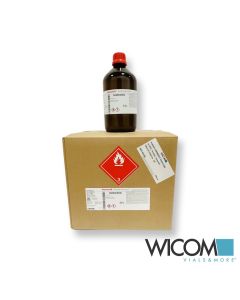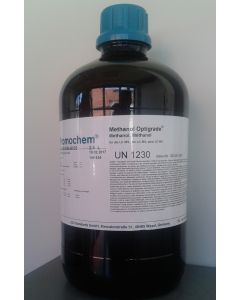Solvent
- Packaging Unit PK/6Special Price $1,084.08 Regular Price $1,482.41 Bulk price $977.52Excl. VAT, excl. Shipping
- Packaging Unit PK/4Special Price $150.99 Regular Price $195.53 Bulk price $108.52Excl. VAT, excl. Shipping
- Packaging Unit PCESpecial Price $225.40 Regular Price $243.75 Bulk price $175.97Excl. VAT, excl. Shipping
- Packaging Unit PCE$86.79 Bulk price $75.93Excl. VAT, excl. Shipping
- Packaging Unit PK/4Special Price $106.34 Regular Price $129.26 Bulk price $56.49Excl. VAT, excl. Shipping
- Packaging Unit PK/4$526.83 Bulk price $511.03Excl. VAT, excl. Shipping
- Packaging Unit PK/4$378.02 Bulk price $345.49Excl. VAT, excl. Shipping
- Packaging Unit PK/4Special Price $324.79 Regular Price $539.87 Bulk price $270.48Excl. VAT, excl. Shipping
- Packaging Unit PK/4Special Price $263.72 Regular Price $382.39 Bulk price $205.95Excl. VAT, excl. Shipping
- Packaging Unit PK/4Special Price $508.37 Regular Price $630.03 Bulk price $413.32Excl. VAT, excl. Shipping
- Packaging Unit PK/4$316.75 Bulk price $279.42Excl. VAT, excl. Shipping
- Packaging Unit PK/4Special Price $137.48 Regular Price $307.63 Bulk price $115.69Excl. VAT, excl. Shipping
- Packaging Unit PK/1Special Price $75.93 Regular Price $97.65 Bulk price $65.07Excl. VAT, excl. Shipping
- Packaging Unit PK/4Special Price $295.03 Regular Price $404.09 Bulk price $262.76Excl. VAT, excl. Shipping
- Packaging Unit PCESpecial Price $75.28 Regular Price $86.79 Bulk price $69.41Excl. VAT, excl. Shipping
- Packaging Unit PK/6Special Price $151.97 Regular Price $172.75 Bulk price $124.48Excl. VAT, excl. Shipping
- Packaging Unit PK/4Special Price $241.58 Regular Price $316.97 Bulk price $205.08Excl. VAT, excl. Shipping
- Packaging Unit PK/4Special Price $173.69 Regular Price $509.45 Bulk price $141.10Excl. VAT, excl. Shipping
- Packaging Unit PK/4Special Price $363.68 Regular Price $379.10 Bulk price $280.25Excl. VAT, excl. Shipping
- Packaging Unit PK/4Special Price $167.50 Regular Price $215.08 Bulk price $118.84Excl. VAT, excl. Shipping
- Packaging Unit PK/4Special Price $418.61 Regular Price $891.81 Bulk price $325.44Excl. VAT, excl. Shipping
- Packaging Unit PK/4Special Price $258.53 Regular Price $291.12 Bulk price $217.14Excl. VAT, excl. Shipping
- Packaging Unit PK/4Special Price $346.41 Regular Price $835.33 Bulk price $229.09Excl. VAT, excl. Shipping
- Packaging Unit PK/4Special Price $226.10 Regular Price $866.83 Bulk price $195.42Excl. VAT, excl. Shipping
- Packaging Unit PK/4Special Price $272.23 Regular Price $748.26 Bulk price $196.60Excl. VAT, excl. Shipping
- Packaging Unit PK/4Special Price $266.13 Regular Price $522.68 Bulk price $237.89Excl. VAT, excl. Shipping
- Packaging Unit PK/4Special Price $169.02 Regular Price $374.76 Bulk price $162.83Excl. VAT, excl. Shipping
- Packaging Unit PK/4Special Price $116.34 Regular Price $158.86 Bulk price $69.95Excl. VAT, excl. Shipping
- Packaging Unit PK/4Special Price $155.82 Regular Price $221.40 Bulk price $125.90Excl. VAT, excl. Shipping
- Packaging Unit PK/4Special Price $152.02 Regular Price $206.39 Bulk price $140.02Excl. VAT, excl. Shipping
- Packaging Unit PK/4Special Price $103.86 Regular Price $206.93 Bulk price $75.93Excl. VAT, excl. Shipping
- Packaging Unit PK/4Special Price $100.97 Regular Price $142.27 Bulk price $91.79Excl. VAT, excl. Shipping
- Packaging Unit PK/4Special Price $119.38 Regular Price $205.30 Bulk price $108.52Excl. VAT, excl. Shipping
- Packaging Unit PCESpecial Price $143.54 Regular Price $186.13 Bulk price $130.34Excl. VAT, excl. Shipping
- Packaging Unit PK/4Special Price $157.33 Regular Price $195.53 Bulk price $107.54Excl. VAT, excl. Shipping
- Packaging Unit PK/4Special Price $104.82 Regular Price $179.23 Bulk price $95.48Excl. VAT, excl. Shipping
Chromasolv™ solvents from Honeywell
The Chromasolv product family offers a range of high-purity, high-quality chromatography solvents. The HPLC solvents undergo rigorous specification testing to ensure they are suitable for general and routine analysis. Two different grades of the Chromasolv solvent line are used for high performance liquid chromatography.
HPLC Grade: These solvents are characterized by high purity with high UV transmittance at all relevant wavelengths, low intrinsic fluorescence, low evaporation residue, and low acidity and alkalinity.
Gradient Grade: In addition to their suitability for UV and fluorescence detection, they are also specifically tested for their suitability for gradient separation. This ensures batch-consistent quality for gradient grade solvents.
The Chromasolv™ product line is characterized by high purity, stability and consistent quality from batch to batch. It provides users with high-quality solvents for use in HPLC. Honeywell consistently follows global standards for high purity requirements, as reflected in its ISO 9001 and RC 14001 certifications.




